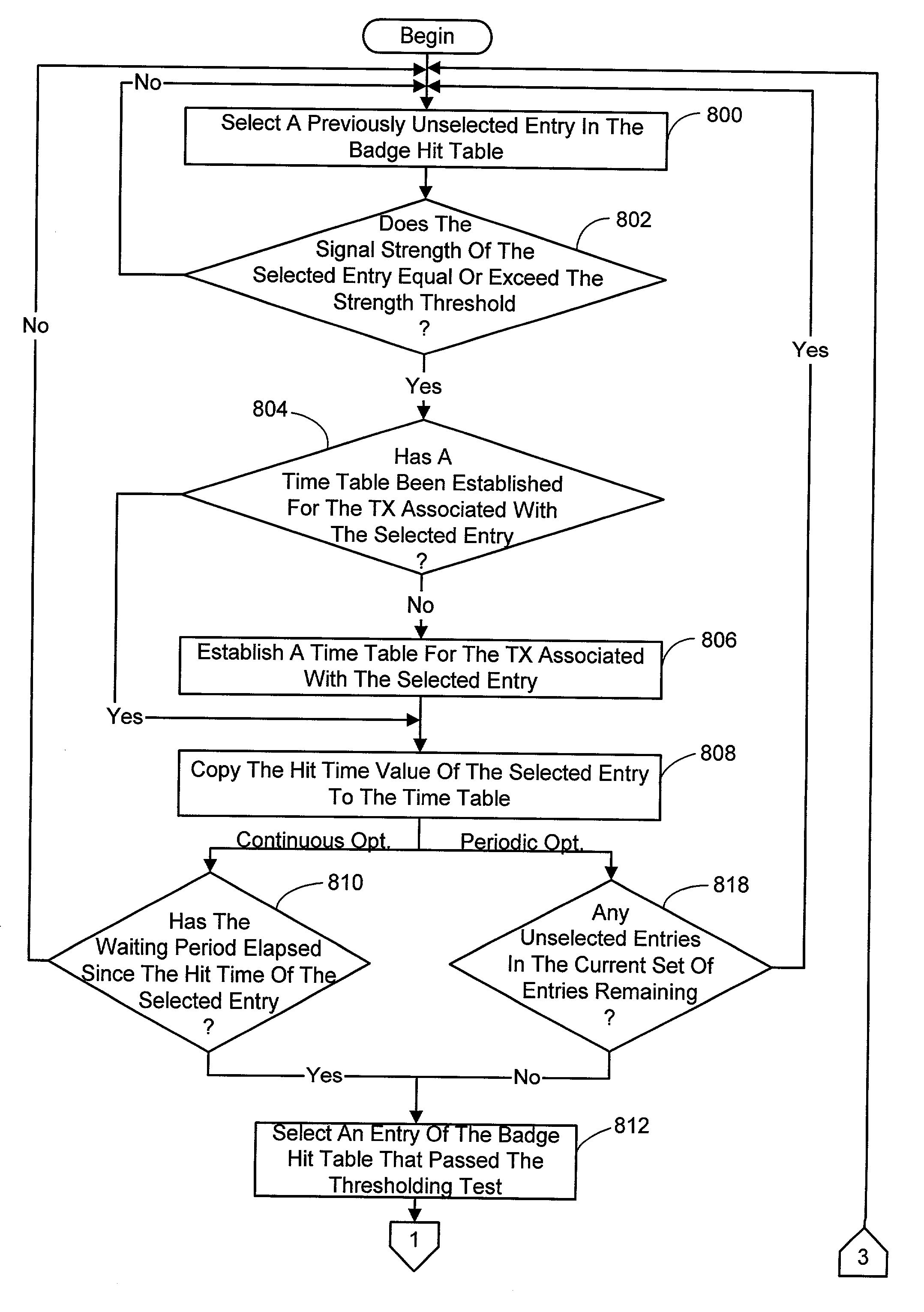Location measurement process for radio-frequency badges
a technology of radio frequency badges and measurement processes, applied in direction finders using radio waves, instruments, data switching networks, etc., can solve the problems of inability to provide the actual 3d location of the person or object, system infrared-based, inconvenient operation, etc., and achieve the effect of simple radio frequency and minimal overhead costs
- Summary
- Abstract
- Description
- Claims
- Application Information
AI Technical Summary
Benefits of technology
Problems solved by technology
Method used
Image
Examples
Embodiment Construction
[0036]In the following description of the preferred embodiments of the present invention, reference is made to the accompanying drawings which form a part hereof, and in which is shown by way of illustration specific embodiments in which the invention may be practiced. It is understood that other embodiments may be utilized and structural changes may be made without departing from the scope of the present invention.
[0037]Referring to FIG. 1, the location tracking system employing the present location measurement process tracks the location of persons and objects carrying radio frequency (RF) transmitters 10 that transmit messages to at least one RF receiver 12. Each receiver 12 is connected to a computing device 14, such as a personal computer (PC) that is in turn part of an existing network 16 of such computing devices. The receivers 12 forward data received from the transmitters 10, along with radio signal strength indicator (RSSI) data, to a centralized computer 18 via the networ...
PUM
 Login to View More
Login to View More Abstract
Description
Claims
Application Information
 Login to View More
Login to View More - R&D
- Intellectual Property
- Life Sciences
- Materials
- Tech Scout
- Unparalleled Data Quality
- Higher Quality Content
- 60% Fewer Hallucinations
Browse by: Latest US Patents, China's latest patents, Technical Efficacy Thesaurus, Application Domain, Technology Topic, Popular Technical Reports.
© 2025 PatSnap. All rights reserved.Legal|Privacy policy|Modern Slavery Act Transparency Statement|Sitemap|About US| Contact US: help@patsnap.com



